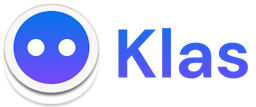How to Create a Coding Course with Live Classes for Kids (In 7 Steps)


Coding is an essential skill that kids should start learning early. Whether it's building websites, creating games, or developing apps, coding unlocks endless opportunities for these little ones as they grow. If you’re considering creating a coding course for kids with live classes, you’re making a great and sustainable choice.
As online coding courses are growing in demand, it’s important to have the right tools and approach to be able to create an engaging and transformational experience for your learners who are kids. In this blog post, we will guide you through 7 easy steps to create a coding course with live classes for kids to make it fun and easy to understand for them.
How to Create a Coding Course with Live Classes for Kids
1. Understand Your Target Learners
Before you begin creating your coding course, it's essential to understand the age, skill level, and interests of your target learners. Kids, like adults, have different learning styles, so you'll need to consider the group while creating the course content. Here are a few things to consider:
- Age Range: Is your course meant for beginners, or is it for kids with prior coding experience? For younger kids, focus on interactive lessons and visual tools. For older kids, you can go deeper into more complex coding concepts.
- Interests: Try to include elements of coding that align with kids’ hobbies. If they enjoy gaming, you might want to teach them how to code a simple game. If they love art, maybe they’d enjoy learning how to make animations.
Having a clear picture of who you’re teaching can help you tailor the course to ensure kids stay engaged and motivated throughout the entire learning journey.
Also read: 3 Kinds of Student Support Services to Offer to your Online Learners
2. Choose the Right Coding Languages
Not all programming languages are suitable for kids. When picking coding languages, you want to ensure they are easy to understand, fun, and can lead to exciting results. Here are a few great options:
- Scratch: Scratch is a visual programming language designed specifically for younger learners. It’s great for teaching the basics of coding through drag-and-drop blocks.
- Python: Python is a versatile and beginner-friendly language, perfect for older kids who are ready to dive deeper into coding concepts. It's used in real-world applications like web development, AI, and more.
- HTML/CSS: These web development languages can help kids build their first websites, making learning rewarding and fun.
Choosing the right language ensures these kids get the most out of your course and stay engaged with the content.
3. Plan Your Coding Course Curriculum
Creating a sound curriculum is essential for any successful online course. It acts as the roadmap for your learners’ learning journey and helps you stay organized. A good curriculum should:
- Start with the Basics: Begin by introducing core programming concepts like loops, variables, and functions. For younger kids, start with fun, visual tools like Scratch before progressing to more complex languages.
- Use Projects: Projects are a great way for kids to apply what they’ve learned. Encourage them to build a game, a website, or a simple app by the end of the course.
- Gradually increase the difficulty level as these kids advance. This ensures they don’t feel overwhelmed and keeps their motivation high.
Having a well-planned curriculum will also allow you to deliver live classes more effectively, as each lesson will follow a logical flow.
Also read: 5 Effective Ideas to Drive Engagement in Your Virtual Classroom
4. Select the Best Platform for Live Classes
The platform you use to host live classes plays an essential role in delivering a seamless and interactive learning experience. You’ll need a platform that supports live interaction and provides the necessary features to keep kids engaged.
Klas is a great choice for hosting live coding classes because it allows you to:
- Host live classes with up to 100 students so you can engage a wide audience.
- Use interactive features like polls, Q&A, and emojis to make classes fun.
- Record sessions and make them available for learners to revisit anytime.
With Klas, you can easily manage your classes, track your learners’ progress, and ensure a seamless and interactive teaching and learning experience.
5. Create Engaging Course Material
Kids learn best when they are actively involved. That’s why it's important to create engaging and interactive course material that keeps them hooked. Here are some tips:
- Include graphics, animations, and videos to explain coding concepts.
- Integrate challenges and quizzes that offer rewards or badges for completing tasks.
- Don’t overwhelm kids with too much information at once. Break concepts down into smaller, digestible lessons.
Interactive materials will help them learn faster and stay excited about the course.
Also read: The importance of personalized learning to the success of your online academy.
6. Include Gamification & Interactive Learning in Your Strategy
Gamification can make coding courses much more exciting for kids. When learning feels like a game, children are more likely to stay engaged. Here’s how you can add gamification to your course:
- Quizzes and Challenges: After each lesson, give students a quiz or challenge them to create a project using what they’ve learned.
- Badges and Rewards: Offer badges for completing tasks, milestones, or solving challenges. This provides a sense of achievement and motivates kids to continue learning and progressing.
Klas also has interactive features that support gamification, like real-time feedback and class competitions, which can make your course even more exciting.
7. Decide the Pricing of Your Coding Course
Pricing is an important factor when it comes to attracting students. In this case, it is the kids' parent or guardian. If you want your course to be affordable and also reflect its value, consider offering different pricing options:
- Free Trial: You can let students experience the first few classes for free to see if they like it.
- Subscription Model: Offer a monthly or yearly subscription for access to the entire course or series of courses.
- One-Time Payment: Alternatively, a one-time payment for the full course can also be an attractive option.
Klas’s built-in payment system, Klas Pay, allows you to accept payments from all over the world, making it easier for you to monetize your courses.
Conclusion
Creating a coding course with live classes for kids can be an incredibly rewarding experience. These 7 steps can help you create a fun and impactful learning experience that kids will love. With Klas, it’s easier to create a fun and transforming learning experience for these kids.



